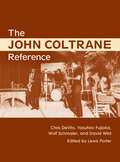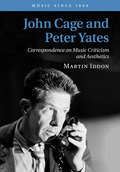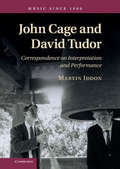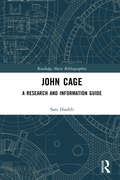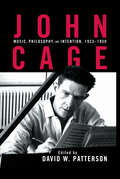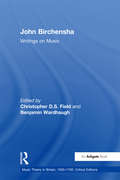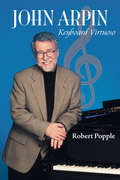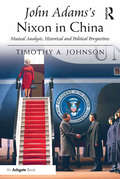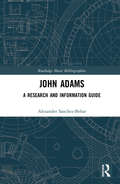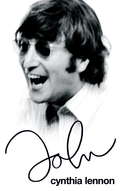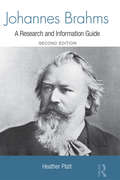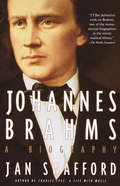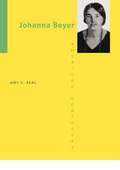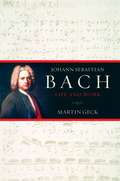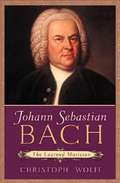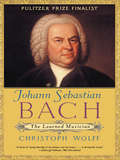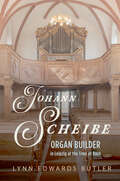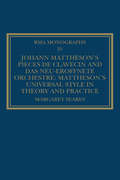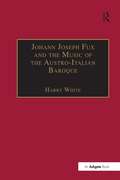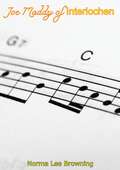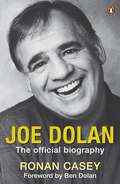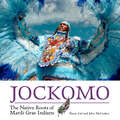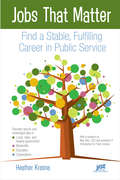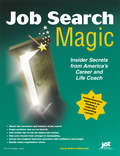- Table View
- List View
The John Coltrane Reference
by Lewis Porter Chris DeVito David Wild Yasuhiro Fujioka Wolf SchmalerThe BBC's Jazz Book of the Year for 2008. Few jazz musicians have had the lasting influence or attracted as much scholarly study as John Coltrane. Yet, despite dozens of books, hundreds of articles, and his own recorded legacy, the "facts" about Coltrane's life and work have never been definitely established. Well-known Coltrane biographer and jazz educator Lewis Porter has assembled an international team of scholars to write The John Coltrane Reference, an indispensable guide to the life and music of John Coltrane. The John Coltrane Reference features a a day-by-day chronology, which extends from 1926-1967, detailing Coltrane's early years and every live performance given by Coltrane as either a sideman or leader, and a discography offering full session information from the first year of recordings, 1946, to the last, 1967. The appendices list every film and television appearance, as well as every recorded interview. Richly illustrated with over 250 album covers and photos from the collection of Yasuhiro Fujioka, The John Coltrane Reference will find a place in every major library supporting a jazz studies program, as well as John Coltrane enthusiasts.
John Cage and Peter Yates: Correspondence on Music Criticism and Aesthetics (Music since 1900)
by Martin IddonThe correspondence between composer John Cage and Peter Yates represents the third and final part of Cage's most significant exchanges of letters, following those with Pierre Boulez and with David Tudor. Martin Iddon's book is the first volume to collect the complete extant correspondence with his critical friend, thus completing the 'trilogy' of Cage correspondence published by Cambridge. By bringing together more than 100 letters, beginning in 1940 and continuing until 1971, Iddon reveals the dialogue within which many of Cage's ideas were first forged and informed, with particular focus on his developing attitudes to music criticism and aesthetics. The correspondence with Yates represents precisely, in alignment with Cage's fastidious neatness, the part of his letter writing in which he engages most directly with the last part of his famous tricolon, 'composing's one thing, performing's another, listening's a third'.
John Cage and David Tudor
by Martin IddonJohn Cage is best known for his indeterminate music, which leaves a significant level of creative decision-making in the hands of the performer. But how much licence did Cage allow? Martin Iddon's book is the first volume to collect the complete extant correspondence between the composer and pianist David Tudor, one of Cage's most provocative and significant musical collaborators. The book presents their partnership from working together in New York in the early 1950s, through periods on tour in Europe, until the late stages of their work from the 1960s onwards, carried out almost exclusively within the frame of the Merce Cunningham Dance Company. Tackling the question of how much creative flexibility Tudor was granted, Iddon includes detailed examples of the ways in which Tudor realised Cage's work, especially focusing on Music of Changes to Variations II, to show how composer and pianist influenced one another's methods and styles.
John Cage: A Research and Information Guide (Routledge Music Bibliographies)
by Sara HaefeliThis annotated bibliography uncovers the wealth of resources available on the life and music of John Cage, one of the most influential and fascinating composers of the twentieth-century. The guide will focus on documentary studies, archival resources, scholarly research, and autobiographical materials, and place the composer and his work in a larger context of postmodern philosophy, art and theater movements, and contemporary politics. It will support emerging scholarship and inquiry for future research on Cage, with carefully selected sources and useful annotations.
John Cage: Music, Philosophy, and Intention, 1933-1950 (Studies In Contemporary Music And Culture Ser.)
by David W. PattersonJohn Cage seeks to explore the early part of the composer's life and career, concentrating on the pre-chance period between 1933 and 1950 that is crucial to understanding his later work. The essays consider Cage's influences, his evolving aesthetic, and his movement toward ideology that would later shape his work.
John Birchensha: Writings On Music (Music Theory In Britain, 1500-1700: Critical Editions Ser.)
by Benjamin WardhaughJohn Birchensha (c.1605-?1681) is chiefly remembered for the impression that his theories about music made on the mathematicians, natural philosophers and virtuosi of the Royal Society in the 1660s and 1670s, and for inventing a system that he claimed would enable even those without practical experience of music to learn to compose in a short time by means of 'a few easy, certain, and perfect Rules'-his most famous composition pupil being Samuel Pepys in 1662. His great aim was to publish a treatise on music in its philosophical, mathematical and practical aspects (which would have included a definitive summary of his rules of composition), entitled Syntagma music Subscriptions for this book were invited in 1672-3, and it was due to be published by March 1675; but it never appeared, and no final manuscript of it survives. Consequently knowledge about his work has hitherto remained extremely sketchy. Recent research, however, has brought to light a number of manuscripts which allow us at last to form a more complete view of Birchensha's ideas. Almost none of this material has been previously published. The new items include an autograph treatise of c.1664 ('A Compendious Discourse of the Principles of the Practicall & Mathematicall Partes of Musick') which Birchensha presented to the natural philosopher Robert Boyle, and which covers concisely much of the ground that he intended to cover in Syntagma music a detailed synopsis for Syntagma music hich he prepared for a meeting of the Royal Society in February 1676; and an autograph notebook (now in Brussels) containing his six rules of composition with music examples, presumably written for a pupil. Bringing all this material together in a single volume will allow scholars to see how Birchensha's rules and theories developed over a period of fifteen years, and to gain at least a flavour of the lost Syntagma music
John Arpin: Keyboard Virtuoso
by Robert PoppleBorn and raised in Port McNicoll, John Arpin discovered his musical talents early: at the age of four he could pick out tunes on the piano that he had heard on the radio; by ten, he had been identified as a child prodigy by a Royal Conservatory of Music adjudicator. He would go on to become one of Canada’s finest keyboard virtuosos, playing at concert halls around the world. Equally at ease performing solo piano concerts, being accompanied by a full symphony orchestra, jamming with jazz greats, or accompanying opera singers, he was, perhaps, best known as the premier ragtime pianist of his day. This authorized biography is based on more than 40 hours of conversation during the last four years of John’s life and supported by extensive research. Included are his friendships with Glenn Gould, Gordon Lightfoot, and others, his years as the designated artist for Yamaha, and his rise to prominence as a veteran of the concert stage. His stories represent pure Canadian music history.
John Adams's Nixon in China: Musical Analysis, Historical and Political Perspectives
by Timothy A. JohnsonJohn Adams's opera, Nixon in China, is one of the most frequently performed operas in the contemporary literature. Timothy A. Johnson illuminates the opera and enhances listeners' and scholars' appreciation for this landmark work. This music-analytical guide presents a detailed, in-depth analysis of the music tied to historical and political contexts. The opera captures an important moment in history and in international relations, and a close study of it from an interdisciplinary perspective provides fresh, compelling insights about the opera. The music analysis takes a neo-Riemannian approach to harmony and to large-scale harmonic connections. Musical metaphors drawn between harmonies and their dramatic contexts enrich this approach. Motivic analysis reveals interweaving associations between the characters, based on melodic content. Analysis of rhythm and meter focuses on Adams's frequent use of grouping and displacement dissonances to propel the music forward or to illustrate the libretto. The book shows how the historical depiction in the opera is accurate, yet enriched by this operatic adaptation. The language of the opera is true to its source, but more evocative than the words spoken in 1972-due to Alice Goodman's marvelous, poetic libretto. And the music transcends its repetitive shell to become a hierarchically-rich and musically-compelling achievement.
John Adams: A Research and Information Guide (Routledge Music Bibliographies)
by Alexander Sanchez-BeharJohn Adams: A Research and Information Guide offers the first comprehensive guide to the musical works and literature of one of the leading American composers of our time. The research guide catalogs and summarizes materials relating to Adams’s work, providing detailed annotated bibliographic entries for both primary and secondary sources. Covering writings by and interviews with Adams, books, journal articles and book chapters, newspaper articles and reviews, dissertations, video recordings, and other sources, the guide also contains a chronology of Adams’s life, a discography, and a list of compositions. Robust indexes enable researchers to easily locate sources by author, composition, or subject. This volume is a major reference tool for all those interested in Adams and his music, and a valuable resource for students and researchers of minimalism, contemporary American music, and twentieth-century music more broadly.
John
by Cynthia LennonCynthia and John Lennon's relationship spanned ten crucial years of the Beatles phenomenon. But as well as new insight into the Beatles years, Cynthia has a compelling personal story of marriage, motherhood and the man who was to become the most idolised and admired of all the Beatles.Cynthia is candid about the cruel and the loving sides of John. She tells of the end of their marriage and the beginning of his relationship with Yoko Ono in more detail than ever before, and reveals the many difficulties estrangement from John - and then his death - brought for herself and Julian. Cynthia is a remarkable survivor and this is her extraordinary story and unique insight into a man loved and idolised all over the world.
John
by Cynthia LennonCynthia and John Lennon's relationship spanned ten crucial years of the Beatles phenomenon. But as well as new insight into the Beatles years, Cynthia has a compelling personal story of marriage, motherhood and the man who was to become the most idolised and admired of all the Beatles.Cynthia is candid about the cruel and the loving sides of John. She tells of the end of their marriage and the beginning of his relationship with Yoko Ono in more detail than ever before, and reveals the many difficulties estrangement from John - and then his death - brought for herself and Julian. Cynthia is a remarkable survivor and this is her extraordinary story and unique insight into a man loved and idolised all over the world.
Johannes Brahms: A Research And Information Guide (Routledge Music Bibliographies)
by Heather PlattFirst published in 2011. Routledge is an imprint of Taylor & Francis, an informa company.
Johannes Brahms
by Jan SwaffordAn illuminating new biography of one of the most beloved of all composers, published on the hundredth anniversary of his death, brilliantly written by a finalist for the 1996 National Book Critics Circle Award. Johannes Brahms has consistently eluded his biographers. Throughout his life, he attempted to erase traces of himself, wanting his music to be his sole legacy. Now, in this masterful book, Jan Swafford, critically acclaimed as both biographer and composer, takes a fresh look at Brahms, giving us for the first time a fully realized portrait of the man who created the magnificent music. Brahms was a man with many friends and no intimates, who experienced triumphs few artists achieve in their lifetime. Yet he lived with a relentless loneliness and a growing fatalism about the future of music and the world. The Brahms that emerges from these pages is not the bearded eminence of previous biographies but rather a fascinating assemblage of contradictions. Brought up in poverty, he was forced to play the piano in the brothels of Hamburg, where he met with both mental and physical abuse. At the same time, he was the golden boy of his teachers, who found themselves in awe of a stupendous talent: a miraculous young composer and pianist, poised between the emotionalism of the Romantics and the rigors of the composers he worshipped--Bach, Mozart, Beethoven. In 1853, Robert Schumann proclaimed the twenty-year-old Brahms the savior of German music. Brahms spent the rest of his days trying to live up to that prophecy, ever fearful of proving unworthy of his musical inheritance. We find here more of Brahms's words, his daily life and joys and sorrows, than in any other biography. With novelistic grace, Swafford shows us a warm-blooded but guarded genius who hid behind jokes and prickliness, rudeness and intractability with his friends as well as his enemies, but who was also a witty drinking companion and a consummate careerist skillfully courting the powerful. This is a book rich in secondary characters as well, including Robert Schumann, declining into madness as he hailed the advent of a new genius; Clara Schumann, the towering pianist, tormented personality, and great love of Brahms's life; Josef Joachim, the brilliant, self-lacerating violinist; the extraordinary musical amateur Elisabet von Herzogenberg, on whose exacting criticism Brahms relied; Brahms's rival and shadow, the malevolent genius Richard Wagner; and Eduard Hanslick, enemy of Wagner and apostle of Brahms, at once the most powerful and most wrongheaded music critic of his time. Among the characters in the book are two great cities: the stolid North German harbor town of Hamburg where Johannes grew up, which later spurned him; and glittering, fickle, music-mad Vienna, where Brahms the self-proclaimed vagabond finally settled, to find his sweetest triumphs and his most bitter failures. Unique to this book is the way in which musical scholarship and biography are combined: in a style refreshingly free of pretentiousness, Jan Swafford takes us deep into the music--from the grandeur of the First Symphony and the intricacies of the chamber work to the sorrow of the German Requiem--allowing us to hear these familiar works in new and often surprising ways. This is a clear-eyed study of a remarkable man and a vivid portrait of an era in transition. Ultimately, Johannes Brahms is the story of a great, backward-looking artist who inspired musical revolutionaries of the following generations, yet who was no less a prophet of the darkness and violence of our century. A biographical masterpiece at once wholly original and definitive.From the Hardcover edition.
Johanna Beyer
by Amy C. BealComposer Johanna Beyer's fascinating body of music and enigmatic life story constitute an important chapter in American music history. As a hard-working German émigré piano teacher and accompanist living in and around New York City during the New Deal era, she composed plentiful music for piano, percussion ensemble, chamber groups, choir, band, and orchestra. A one-time student of Ruth Crawford, Charles Seeger, and Henry Cowell, Beyer was an ultramodernist, and an active member of a community that included now-better-known composers and musicians. Only one of her works was published and only one recorded during her lifetime. But contemporary musicians who play Beyer's compositions are intrigued by her originality. Amy C. Beal chronicles Beyer's life from her early participation in New York's contemporary music scene through her performances at the Federal Music Project's Composers' Forum-Laboratory concerts to her unfortunate early death in 1944. This book is a portrait of a passionate and creative woman underestimated by her music community even as she tirelessly applied her gifts with compositional rigor. The first book-length study of the composer's life and music, Johanna Beyer reclaims a uniquely innovative artist and body of work for a new generation.
Johann Sebastian Bach: Life and Work
by Martin Geck John HargravesGeck (musicology, Dortmund U., Germany) provides a study of Johann Sebastian Bach's life and music. He traces the career path the composer followed, from his early education to role as Kapellmeister of the St. Thomas Church in Leipzig and director of the collegium musicum. He then reserves half of the volume for an examination of Bach's music by genre, analyzing individual pieces and groups of vocal and instrumental works, and ends with brief discussions of specific topics such as Bach as a Christian, rhetoric and symbolism, proportion and numerical relations in his music, and theological research. The book has been translated from the German version by Hargraves (German language and literature, Yale U. and Connecticut College). Annotation ©2007 Book News, Inc., Portland, OR (booknews.com)
Johann Sebastian Bach: The Learned Musician
by Christoph WolffPublished on the 250th anniversary of the composer's death, this life history portrays Bach as the human being that he was, while bringing to bear all the advances gained in the last half-century of Bach scholarship. Wolff (professor of music, and dean of the Graduate School of Arts and Sciences, Harvard U.) demonstrates the intimate connection between the composer's life and his music, showing how Bach's superb inventiveness pervaded his career as musician, composer, performer, scholar, and teacher. He also provides a look at Bach's life and his surroundings, as well as how he fit into the broader context of the institutions, traditions, and influences of his time. Annotation c. Book News, Inc., Portland, OR (booknews.com)
Johann Sebastian Bach: The Learned Musician (Música/ma Non Troppo Ser.)
by Christoph WolffFinalist for the 2001 Pulitzer Prize in Biography, this landmark book was revised in 2013 to include new knowledge discovered after its initial publication. Although we have heard the music of J. S. Bach in countless performances and recordings, the composer himself still comes across only as an enigmatic figure in a single familiar portrait. As we mark the 250th anniversary of Bach's death, author Christoph Wolff presents a new picture that brings to life this towering figure of the Baroque era. This engaging new biography portrays Bach as the living, breathing, and sometimes imperfect human being that he was, while bringing to bear all the advances of the last half-century of Bach scholarship. Wolff demonstrates the intimate connection between the composer's life and his music, showing how Bach's superb inventiveness pervaded his career as musician, composer, performer, scholar, and teacher. And throughout, we see Bach in the broader context of his time: its institutions, traditions, and influences. With this highly readable book, Wolff sets a new standard for Bach biography.
Johann Scheibe: Organ Builder in Leipzig at the Time of Bach
by Lynn Edwards ButlerIn his nearly forty-year career, Johann Scheibe became Leipzig's most renowned organ builder and one of the late Baroque's masters of the craft. Johann Sebastian Bach and Johann Kuhnau considered Scheibe a valued colleague. Organists and civic leaders shared their high opinion, for Scheibe built or rebuilt every one of the city's organs. Drawing on extensive research and previously untapped archival materials, Lynn Edwards Butler explores Scheibe's professional relationships and the full range of his projects. These assignments included the three-manual organ for St. Paul’s Church, renovations of the organs in the important churches of St. Thomas and St. Nicholas, and the lone surviving example of Scheibe's craft, a small organ in the nearby village of Zschortau. Viewing Scheibe within the context of the era, Butler illuminates the music scene of Bach's time as she follows the life of a gifted craftsman and his essential work on an instrument that anchored religious musical practice and community.
Johann Mattheson's Pièces de clavecin and Das neu-eröffnete Orchestre: Mattheson's Universal Style in Theory and Practice
by Margaret SearesA prolific music theorist and critic as well as an established composer, Johannes Mattheson remains surprisingly understudied. In this important study, Margaret Seares places Mattheson‘s Pi‘s de clavecin (1714) in the context of his work as a public intellectual who encouraged German musicians and their musical public to eschew what he saw as the hidebound traditions of the past, and instead embrace a universalism of style and expression derived from contemporary currents in music of the leading European nations. Beginning with the early non-musical writings by Mattheson, Seares places them in the context of the cosmopolitan city-state of Hamburg, before moving to a detailed study of his first major musical treatise Das neu-er ffnete Orchestre of 1713, in which he espoused his views about the musics of the past and present and, in particular, the characteristics of the musics of Germany, Italy, France and England. This latter section of the treatise, Part III, is edited and translated into English in the book's appendix - the first such translation available. Seares then moves on to an evaluation of the Pi‘s de clavecin as a work in which Mattheson reflects in musical terms the themes of modernism (in the sense ofa mode) and universalism that are such a strong part of his writings of the period, and a work that represents an important precursor for the keyboard suites of Johann Sebastian Bach and Georg Frideric Handel.
Johann Joseph Fux and the Music of the Austro-Italian Baroque
by Harry WhiteJohann Joseph Fux's reputation as a theorist and the long-term influence of his theoretical and pedagogical work have ensured that his name is widely known in music circles in the West. His pre-eminence as the foremost native-born composer of the Austrian Baroque has resulted in attention being focused on his work as an exemplum of virtually every genre, sacred or secular of Austro-Italian early eighteenth-century music. The publication of the Fux Gesamtausgabe has greatly enhanced the reputation of his music and the essays in this volume will develop our understanding of Fux, his music, and his place in musical history.
Joe Maddy of Interlochen
by Norma Lee BrowningMusic lessons, Joe Maddy has always felt, should not be painful. They are an exciting experience at the Interlochen Arts Academy or any of the other thousands of schools around the world to which Doctor, Professor and conductor Maddy’s influence has extended during the past forty-five years.Joe Maddy of Interlochen is the lively story of one of America’s best-known, best-loved, and most colorful pioneers in music. Joe Maddy came to Interlochen, Michigan in 1928 to found the first national summer music camp. A Professor of Music at the University of Michigan, he was short on financial support, but not on enthusiasm and skill. In 1961 the music camp was reorganized as the year ‘round Interlochen Arts Academy....The activities at Interlochen now embrace art, drama, dance, and other academic subjects, but the teaching of music remains the primary purpose. His success at teaching was highlighted in August, 1962, when an Interlochen delegation of 103 musicians and 14 ballet dancers had the honor of entertaining President Kennedy and a large audience on the lawn of the White House....
Joe Dolan: The Official Biography
by Ronan CaseyGrowing up in poor circumstances in the midlands town of Mullingar might seem an unlikely start for a musical superstar, but that's exactly the journey Joe Dolan travelled in his amazing life. Not only that, Joe never forgot his roots and loved Mullingar to the day he died.From losing his father at a tragically young age, to his bold decision while still a teenager to throw in a good job and pursue his dream of playing music for a living, to early stardom with The Drifters and conquering the USSR, to his later re-emergence for a new generation of fans as the iconic Man in the White Suit - the amazing, mad, bad and funny stories behind the legendary career will be told for the first time.It is a colourful, life-affirming, revealing and hugely entertaining biography that is a fitting tribute to such a beloved performer.
Jockomo: The Native Roots of Mardi Gras Indians
by Shane Lief John McCuskerJockomo: The Native Roots of Mardi Gras Indians celebrates the transcendent experience of Mardi Gras, encompassing both ancient and current traditions of New Orleans. The Mardi Gras Indians are a renowned and beloved fixture of New Orleans public culture. Yet very little is known about the indigenous roots of their cultural practices. For the first time, this book explores the Native American ceremonial traditions that influenced the development of the Mardi Gras Indian cultural system. Jockomo reveals the complex story of exchanges that have taken place over the past three centuries, generating new ways of singing and speaking, with many languages mixing as people’s lives overlapped. Contemporary photographs by John McCusker and archival images combine to offer a complementary narrative to the text. From the depictions of eighteenth-century Native American musical processions to the first known photo of Mardi Gras Indians, Jockomo is a visual feast, displaying the evolution of cultural traditions throughout the history of New Orleans. By the beginning of the twentieth century, Mardi Gras Indians had become a recognized local tradition. Over the course of the next one hundred years, their unique practices would move from the periphery to the very center of public consciousness as a quintessentially New Orleanian form of music and performance, even while retaining some of the most ancient features of Native American culture and language. Jockomo offers a new way of seeing and hearing the blended legacies of New Orleans.
Jobs That Matter
by Heather KrasnaEmpowers students, job seekers, and career changers to pinpoint the right public service careers for their interests and abilities. Readers will learn how to find great jobs in the local, state, and federal government, as well as in nonprofit or corporate organizations serving the public good.
Job Search Magic
by Susan Britton WhitcombIncludes sample resumes and cover letters, before-and-after interview responses, career-choice guidance, helpful job search Web sites, salary-negotiation tips, job success tips, and much, much more!
